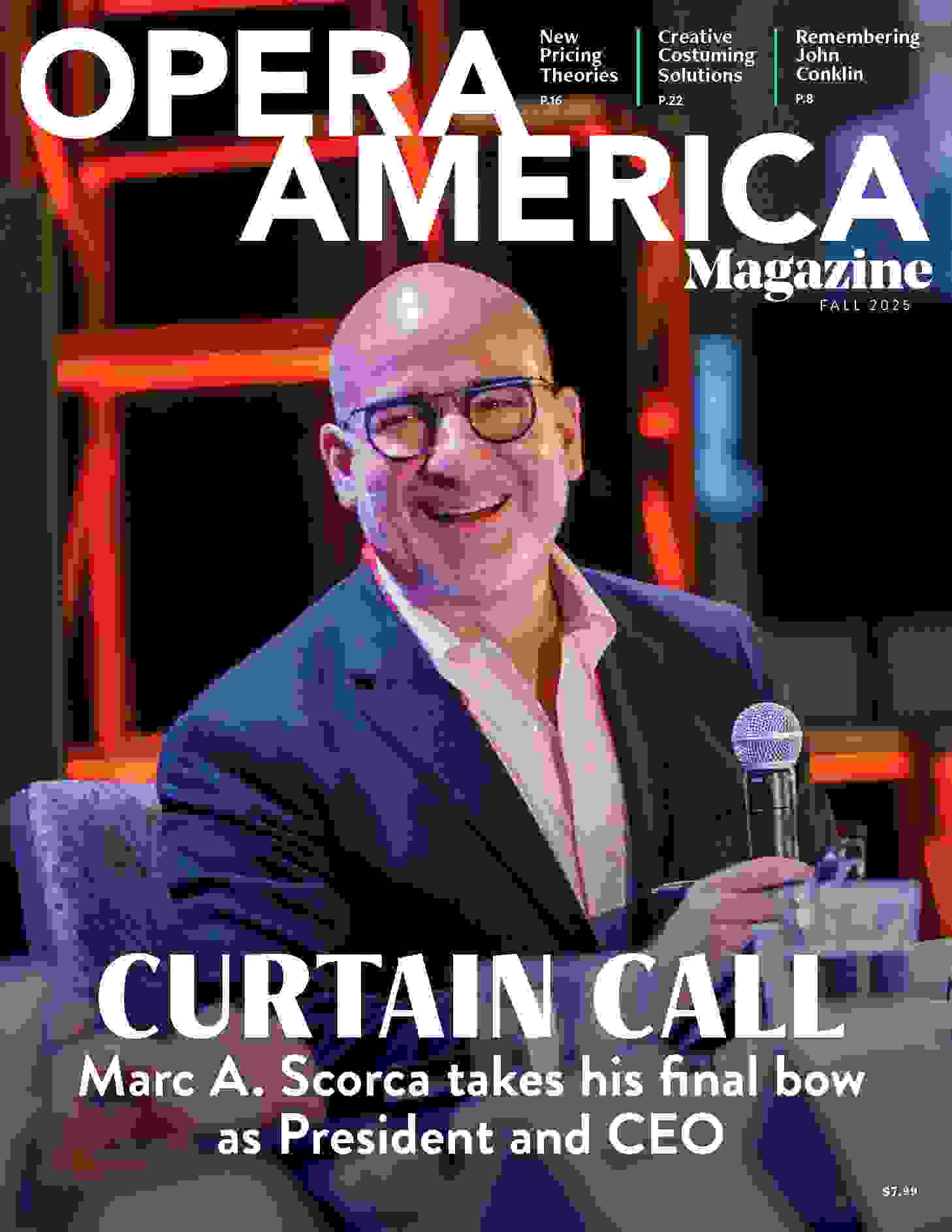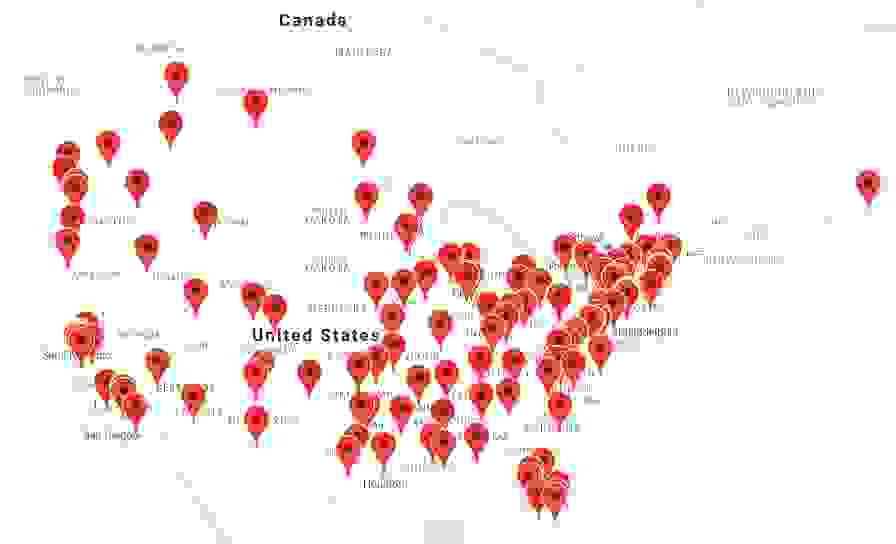Civic Practice Lexicon
Authorship: The key decisions made in community-engaged arts projects that determine the results of a co-created piece. Collaborative authorship is distinct from the leadership needed to facilitate the process of developing the piece. (See “The Continuum of Collaboration, Explained” and http://www.thecpcp.org/field-notes/.)
Citizen Artist: (1) Individuals who reimagine the traditional notions of art-making, and who contribute to society either through the transformative power of their artistic abilities, or through proactive social engagement with the arts in realms including education, community-building, diplomacy and health care (The Aspen Institute). (2) Initiatives are artistically excellent and impact driven, employing artistic innovation to create social or civic impact. (See Yo-Yo Ma on Citizen Artists.)
Civic Practice: Efforts that draw on opera’s creative assets in authentic ways to address public priorities, often through sustained partnership (OPERA America).
Civic Practice: Projects that are co-designed with residents and/or community/municipal agencies and involve artists aiming their creative practice/assets at residents’ self-defined needs (CPCP.org). (See also Studio Practice and Social Practice.)
Community-Based Arts: Art made by and intended for members of a community to express the values, interests and concerns of those communities created through collaborations between professional artists and community members. (See the Australia Council for the Arts resource page.)
Community Benefit Agreement: (1) A project-specific agreement between a developer and a broad community coalition that details the project’s contributions to the community and ensures community support for the project (Community Benefits 101). (2) Agreements that seek accountability from private developers who receive public support for large-scale development projects (Cultural Community Benefit Principles).
Community Engagement: The process of working collaboratively with and through groups of people affiliated by geographic proximity, special interest or similar situations to address issues affecting the well-being of those people. (A common definition used in public health, environment, corporate and social sectors.) In the arts, “community” describes the people and organizations that are related to a provider’s mission: audiences, students, artists, partner organizations and so on. “Engagement” describes an active, two-way process in which one party motivates another to get involved or take action — and both parties experience change. Mutual activity and involvement are the keys to community engagement (adapted from the National Guild for Community Arts Education resource page).
Creative Placemaking: Public, private, nonprofit and community sectors partnering to strategically shape the physical and social character of a neighborhood, town, tribe, city or region around arts and cultural activities. Creative placemaking animates public and private spaces, rejuvenates structures and streetscapes, improves local business viability and public safety, and brings diverse people together to celebrate, inspire and be inspired (National Endowment for the Arts).
Cultural Competence: The ability to understand, appreciate and interact with people from cultures or belief systems different from one's own (American Psychological Association).
Devised Theater: A process in which an ensemble of creative artists develops a performance collaboratively, often evolving from improvisatory exercises and source material, such as news reports and interviews. (See John Walton’s definition and the TDF Theater Dictionary.)
Oppression: Systemic devaluing, undermining, marginalizing and disadvantaging of certain social identities in contrast to the privileged norm; when some people are denied something of value, while others have ready access. (See Racial Equity Tools.)
Outreach: Programs or efforts that are more accurately equated with audience engagement goals of deepening relationships with current stakeholders or extending an organization’s reach to achieve increased earned revenue. Outreach, as opposed to community engagement or civic practice, lacks reciprocity and implies a dynamic that keeps the institution in a position of power. (See Doug Borwick’s exploration.)
Privilege: Unearned access to resources (social power) only readily available to some people as a result of their advantaged social group membership. (See Racial Equity Tools.)
Psychosocial: The psychosocial approach looks at individuals in the context of the combined influence that psychological factors and the surrounding social environment have on their physical and mental wellness and their ability to function (common definition). In many sectors, including market research and public health, psychosocial characteristics are used to segment consumers or constituents.
Public Good: A commodity or service that is provided without profit to benefit all members of a society, either by the government or a private individual or organization, as opposed to a commercial commodity. Economists refer to public goods as “nonrivalrous” and “nonexcludable.” (See Planet Money’s podcast exploring this concept.)
Social Cohesion: A cohesive society can be described as one that “works toward the well-being of all its members, fights exclusion and marginalization, creates a sense of belonging, promotes trust, and offers its members the opportunity of upward social mobility” (OEDC.org). Social cohesion is demonstrated by levels of trusting neighbors, talking to and helping neighbors, and socializing with family and friends. (See key findings from the National Conference on Citizenship’s Study of Social Cohesion.)
Social Practice: Artists work with neighbors and residents on an artist-led vision in ways that may include research, process and/or content creation with an intention of social impact outside traditional audience experience (CPCP.org). (See also Studio Practice and Civic Practice.)
Studio Practice: Artists make their own work and engage with neighbors and residents as an audience. (CPCP.org). (See also Social Practice and Civic Practice.)
Truth and Reconciliation: A concept, used extensively in Africa and Latin America, that has developed into an effective global strategy for dealing with war crimes and other human rights abuses. The approach is one of “restorative justice,” and the process seeks to heal relations between opposing sides by uncovering all pertinent facts, distinguishing truth from lies, and allowing for acknowledgment, appropriate public mourning, forgiveness and healing. (See this U.S.-based Commission and the Commission of Canada.)
This lexicon is part of the report, An Introduction to Civic Practice, published by OPERA America. The report was derived from the meetings of the Civic Action Group, a peer-learning cohort of company representatives working to explore how opera can increase its capacity to address civic priorities, with support from the National Endowment for the Arts.

Leah D. Barto
Leah D. Barto is the acting head of Endeavor Insight at Endeavor and the former director of learning and leadership at OPERA America.






